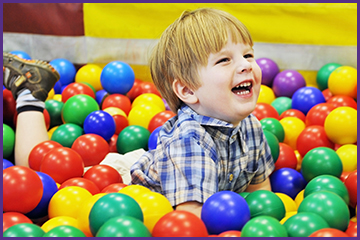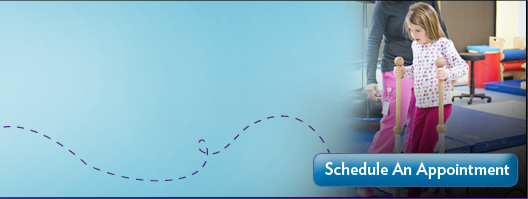Our creative occupational therapy team helps infants and children achieve independence in various aspects of their daily lives. We facilitate play, learning and self-care skills by improving their fine motor, sensory processing, behavioral and visual perceptual skills in a fun and engaging setting.

Occupational Therapy may be appropriate if your child has difficulty with:
- Writing
- Cutting
- Upper body and hand strength
- Play activities
- Dressing
- Hygiene skills
- Feeding
- Fine motor skills
- Visual perceptual skills
- Visual motor integration
- Educational and cognitive skills
- Sensory processing
Other specialized techniques we provide are:
- Sensory Integration: A holistic approach which involves specialized equipment and activities that provide sensations that tend to organize young human brains.
- Orthotic clinic: We work with a certified orthotist and prosthestist in the area on a one-on-one basis for a thorough assessment of the child’s needs.
- Yoga for children: Incorporates the practice of yoga to teach your child relaxation, focus, process sensory stimuli, self-regulate their behavior, strengthen fine and gross motor muscles, enhance coordination, and increase communication skills. This method will enrich the treatment of children with sensory processing and autism spectrum disorders, cerebral palsy, Down syndrome, and ADD/ADHD.
- Handwriting without Tears (http://www.hwtears.com/hwt) (HWOT): This program is unique in that it uses a multi-sensory approach in which children will learn letter formation through visual, tactile, auditory, and kinesthetic activities presented in each lesson.
- Therapressure Protocol: Also known as the Wilbarger Protocol is a therapy developed by Patricia Wilbarger, OTR. It is a professionally guided treatment that may be used to reduce sensory and tactile defensiveness through the use of a specialized brush and joint compression over specific body parts.
- Astronaut Training (http://www.vitallinks.net/) A sound activated vestibular visual protocol- for improving visual-auditory-vestibular integration developed by Mary J. Kawar, OTR. The protocol is designed to stimulate and integrate the vestibular, auditory and visual systems. It is a child-friendly approach that utilizes rotary input (spinning) to elicit reflexive eye movements (nystagmus), which “warms up” the eyes for subsequent focused visual activities.
- Adaptive equipment evaluation: A process of assessing the child’s need for medical durable equipment to assist with completing activities or daily living.

